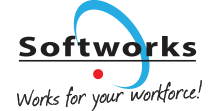Care Home operators and their employees have experienced unprecedented challenges since the arrival of Covid-19 and are displaying incredible resilience and innovation in the way they are adapting their working practices to deal with these challenges. In this Blog, we talk about how Workforce Management Software can make Employee Management easier and more efficient for care homes and discuss 6 Key benefits Workforce Management Software delivers.
What is a Workforce Management System?
A Workforce Management System is a software solution that helps organizations to streamline HR
processes, increase productivity and reduce costs through improved management, scheduling and utilization of their employees. It includes solutions for Staff Scheduling/Rostering, Time and Attendance, Leave management, Skills Management and Regulatory Compliance. It enables organizations to drive efficiencies, better ensure compliance, reduce errors and improve reporting – all while promoting a safe and positive working environment for all employees.
What benefits does a Workforce Management System provide to Care Homes?
- Reduced costs
- Improved payroll accuracy
- Optimized employee scheduling
- Regulatory compliance
- Enhanced resident care
- Employee satisfaction
1. Reduced Costs
Labour is the single largest expense category for most homes and maintaining effective control of employee Time and Attendance is a significant determining factor for a care home’s efficiency as well as its payroll costs.
Automating collection, manipulation and processing of employees’ Time and Attendance allows care home managers to have complete control and transparency in relation to the workforce and payroll costs and enables them to easily identify and eliminate hidden labour costs, generating cost savings and ensuring their labour budget is being effectively utilized.
2. Improved Payroll Accuracy
The superior analytical ability of a Workforce Management System easily manages complex working patterns such as annualised hours, flexitime, part-time and shift working, while automatically assigning the correct pay rates no matter how many different pay rules are in place. This eliminates manual calculations and significantly improves payroll accuracy.
3. Optimized Employee Scheduling
Effective employee Scheduling/Rostering is the building block for the provision of excellent resident care. In many care homes, employee scheduling is still being managed with spreadsheets and paper. As well as being time-consuming, the lack of a central overview of employee time and attendance data makes it difficult to fill gaps created by absences or leave, necessitating the use of costly agency staff.
Choosing a Workforce Management System with automated Employee Scheduling functionality frees up managers from the administrative burden of manual scheduling and allows schedules to be created weeks even months in advance.
4. Regulatory Compliance
In most jurisdictions, employers now have a statutory duty to keep records and take reasonable steps to ensure that working hours comply with local Working Time Legislation. Ensuring legislative compliance can be both challenging and time-consuming but failure to prove compliance can result in significant fines, employee lawsuits and a damaged reputation.
A Workforce Management System takes the hard work out of compliance. To protect employers from inadvertent breaches of the legislation, rules can be built in to ensure employees can only be scheduled if their working time complies with legislation. With all working time and attendance records available in one central system, reports can easily be extracted to prove compliance, saving time, protecting the care home from possible fines and contributing towards a healthy and safe working environment.
5. Enhanced Resident Care
Keeping up-to-date records of employee skills, training and certifications are not just a nice to have, it’s critical for care homes with their specialized skill requirements. A Workforce Management System with skills tracking enables care homes to keep a record of each employee’s skills and certifications along with expiry dates where relevant ensuring this information is always up-to-date and that considerably less time will be spent on its administration.
6. Employee Satisfaction
One of the most useful features of a Workforce Management System is the Employee Self-Service App which can be accessed on a smartphone, desktop or laptop. Using the Self-Service App, employees can update their personal records to reflect changes such as bank details or addresses straight away – no emails and no waiting for HR to confirm receipt. Employee Self-Service gives employees more control over their working lives and contributes significantly towards improving employee empowerment and satisfaction.
In summary
With the increased demand for complex care, the need for visibility and control of operating costs and the requirement to ensure employee satisfaction, it’s never been more important to have effective workforce management in place for care homes. Using a Workforce Management system specifically designed for the challenges faced by care homes helps improve operational efficiency, improve employee satisfaction and supports the provision of superior resident care.
To find out more read our free guide here or get in touch for a Demo today.






